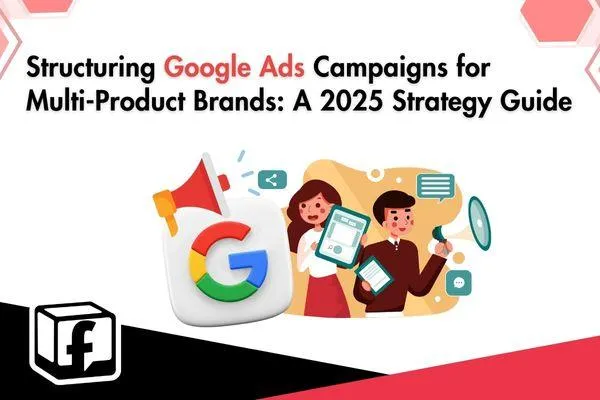
Structuring Google Ads Campaigns for Multi-Product Brands: A 2025 Strategy Guide

How to Structure Google Ads Campaigns for Multi-Product Brands in 2025
Managing Google Ads for a brand with multiple products can be challenging. Without a clear structure, your campaigns can quickly become cluttered, inefficient, and costly. For professionals and ecommerce marketers, structuring Google Ads campaigns properly is critical to maintaining relevance, control, and scalability.
In this article, we’ll explore the best practices for structuring Google Ads campaigns for multi-product brands, including account setup, campaign segmentation, ad group organization, and tips for long-term optimization.
1. Start With a Logical Campaign Segmentation
Structure campaigns based on the following dimensions:
Product Categories: Divide campaigns by top-level product types (e.g., Shoes, Bags, Accessories). This improves budget control and helps Google Ads understand the context.
Performance Goals: Group products with similar goals (e.g., Awareness, Conversion, Retargeting) into dedicated campaigns. This allows for specific bidding strategies.
Geography or Language: If you're targeting multiple regions, create region-specific campaigns to tailor messaging and manage regional budgets.
2. Build Tight Ad Groups for Product Themes
Within each campaign, organize ad groups around:
Specific product types (e.g., Running Shoes, Leather Bags)
User intent (e.g., “buy running shoes online” vs. “best running shoes”)
Search themes (e.g., brand vs generic keywords)
Keep keyword groups tight and focused. This improves ad relevance, Quality Score, and CTR..
3. Write Tailored Ads for Each Product Line
Each ad group should have:
Custom headlines with product names or categories
Dynamic Keyword Insertion if appropriate
Specific CTAs based on the product value (e.g., “Shop Leather Bags Now”)
Include ad extensions like sitelinks, callouts, and structured snippets to feature benefits or product variants.
4. Optimize Product-Specific Landing Pages
A well-structured campaign is incomplete without relevant landing pages.
Link each ad group to its matching product or category page
Ensure consistency between keywords, ads, and page content
Use conversion elements (like reviews, FAQs, and urgency triggers) to boost performance
5. Monitor, Analyze, and Scale
Once your structure is in place:
Track performance by campaign and product type
Reallocate budget based on product profitability
Split high-performing ad groups into new campaigns for scaling
Use automated rules or scripts to manage bids and performance
Conclusion:
For brands offering a wide range of products, having a clear and scalable Google Ads structure is vital. It improves performance, reduces wasted ad spend, and enables smarter growth.
By segmenting campaigns, building tightly themed ad groups, customizing ads, and continuously optimizing performance, multi-product brands can leverage Google Ads more efficiently and profitably.
How Ads with Finesse Can Help You
At Ads with Finesse, we specialize in crafting ad campaigns that highlight the best customer experiences, ensuring your audience connects with your brand on an emotional level. Our team carefully selects authentic, high-impact reviews and seamlessly integrates them into your ad strategy.
Learn more about our services today and turn your Google Ads into your most powerful marketing tool with Ads with Finesse.
Let’s create ads that resonate, convert, and build trust.
Check out our blog and services at adswithfinesse.com.